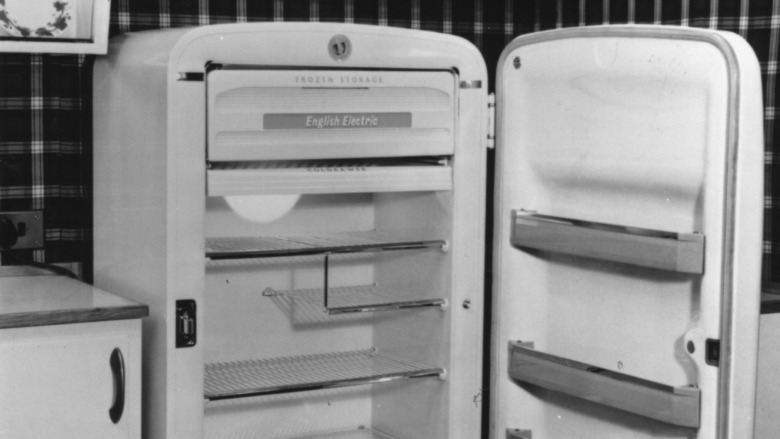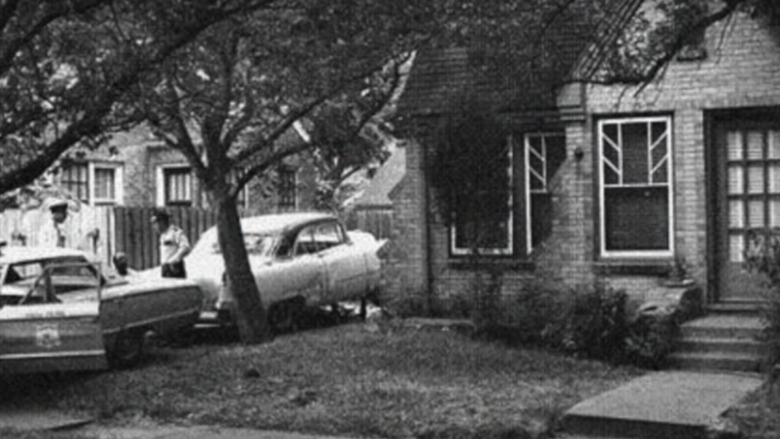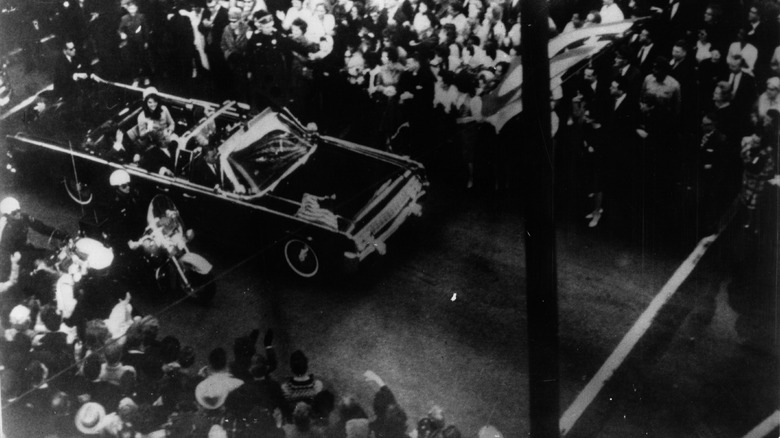Everything We Know About The Unsolved Icebox Murders
On June 23, 1965, Houston police found the remains of an elderly husband and wife in their home, their bodies having been cut up in a way not dissimilar to how a hog is butchered, and then stuffed in a refrigerator. Further gruesome details would later emerge about how the couple's murderer disposed of other parts of their bodies.
Because most of the victims' remains were found in a refrigerator, the crime was given the nickname "The Icebox Murders." In nearly five decades since the crime, investigators have remained unable to pin the murders on a perpetrator. One man, the couple's son, has been identified as the only suspect in the case. He disappeared after the murder and has not been heard from since, and he would be nearing his 100th birthday if in fact he were still alive. Furthermore, he was legally declared dead a decade later. The case remains unsolved to this day.
This is what is known and suspected about the so-called "Icebox murders."
Fred and Edwina Rogers were murdered sometime before June 23, 1965
Two Houston police officers had been called to the home of Fred and Edwina Rogers to do a welfare check, after a neighbor reported that she had not heard from the elderly couple for several days. That was when the bodies were discovered.
As Houstonia reported, the two officers kicked down the door to the home, and in the kitchen, were treated to a gruesome sight: stacks of meat, which the police initially thought was butchered hog meat, in the refrigerator. It was not hog meat.
"On all the shelves and in the freezer compartment were the dismembered bodies, cut in unwrapped, washed-off pieces smaller than individual joints," read a contemporary account of the grim discovery. When the police discovered the severed heads of the elderly couple in the appliance's vegetable drawer, they knew they had a homicide on their hands.
According to Culture Map Houston, the murderer had also removed the victims' organs, cut them up, and flushed them down the toilet and into the city's sewer system, where parts were later found. Other remains have never been found.
The way in which the victims were murdered was equally gruesome
Police would later determine that Fred Rogers had been murdered three days before his body was discovered, on June 20, which was Father's Day that year. According to an archived copy of the June 25, 1965 edition of The Victoria Advocate, published via Google News, Fred had been killed by repeated blows to the head with a claw hammer. Edwina, police said, was beaten and shot in the head "execution-style."
The murderer then dragged the bodies to the master bathroom, according to Houstonia, and drained them of blood before mutilating them. As for Fred specifically, the murderer gouged out his eyes and cut off his genitalia, according to contemporary accounts. "The dismembering apparently was done by a person with some knowledge of anatomy," said investigator Henry Ismonde at the time.
When that was done, the assailant carefully cleaned the crime scene. According to Houston Press, only a small amount of blood was found in the home.
The only suspect is the couple's adult son, Charles Rogers
The murdered couple's adult son, Charles Rogers, was known to have been living with his parents at the time of their death. However, he was nowhere to be seen at the crime scene (above). According to The Victoria Advocate, Charles was a recluse who was known by neighbors to be seen leaving the house before dawn and returning after dark. Further, he was believed to be so reclusive that he only communicated with his parents via notes slipped under his bedroom door.
Though a bloodstained saw was found in Charles' bedroom, he was never charged with the crime. And though police issued a warrant for him as a material witness to the crime, and despite a nationwide manhunt, he was never found.
"He had simply vanished. Some said he snuck off to Canada, while others insisted he was living off the land in the Big Thicket, the East Texas wilds he frequently visited alone for weeks at a stretch," noted the Houston Press report. Ten years later, in 1975, Charles Rogers was declared dead in absentia. If he were still alive today, he would be a few months shy of his 100th birthday.
Some think Charles Rogers was involved in the JFK assassination
Authors John R. Craig and Phillip A. Rogers continued to study the Rogers' murder after the disappearance of the only suspect. In 1992, the two published the book "The Man on the Grassy Knoll," in which they claim that Charles Rogers was actually a CIA agent. What's more, the book claimed that he, along with Charles Harrelson, father of actor Woody Harrelson, were involved in the assassination of then-President John F. Kennedy in Dallas in 1963. This account further claims that Charles Rogers killed his parents because his mother was on to him, and that the alleged murderer fled to Guatemala after his crimes.
In a Publisher's Weekly review, the reviewer claims that Craig and Rogers' thesis, though compelling, is rather weak. "The degree of poetic license, in terms of reconstructed dialogue and attributed thought, seems excessive here, and sourcing is virtually nonexistent," the reviewer wrote.
However, writers Hugh Gardenier and his writing partner, his wife Martha, dismissed any connection to the JFK assassination in their own book ("The Icebox Murders"; 2003). They did admit, however, that Charles Rogers may have had CIA contacts before the murder of his parents, due to his previous work in the oil and gas industries, and that he fled to Honduras after the murder and later died there.




